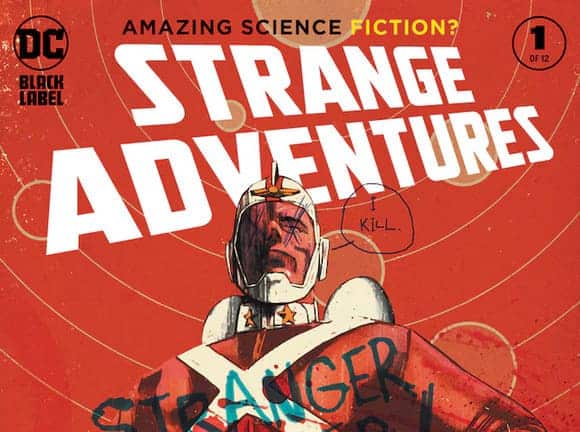Exploring the Fascinating History of DC Comics’ 1950s Strange Adventures #1
Step into the pages of comic book history, and you’ll discover a treasure that changed everything. August 2, 1950, marked a pivotal moment when DC Comics unleashed “Strange Adventures #1” in newsstands across America. It was a declaration of creative independence that would reshape how we think about sequential art storytelling.
The Revolutionary Launch That Changed Comics Forever
Readers in 1950 were accustomed to straightforward superhero tales and simple morality plays. Then came Strange Adventures, bursting with six mind-bending stories that challenged every convention. The anthology format itself was bold: six complete narratives in a single issue, each one pushing boundaries that other publishers wouldn’t dare approach.
The opening story, “Chris KL-99: The Menace of the Green Nebula,” introduced readers to the first baby born in interplanetary space. This wasn’t mere science fiction; it was DC Comics’ audacious statement about humanity’s cosmic destiny. Chris, named after Christopher Columbus and numbered “99” for his 99% graduation score, represented the pioneering spirit that drove America’s post-war optimism.
DC Comics’ Master Storytellers Unleash Their Imagination
Behind these revolutionary tales stood comic book legends who understood that great stories needed emotional depth. Edmond Hamilton, the mastermind behind Chris KL-99’s adventures, had already earned his stripes writing for Amazing Stories magazine. When he crafted this space-faring hero, Hamilton built his own mythology.
What made Strange Adventures #1 truly special wasn’t its science fiction trappings. “The Girl Who Wouldn’t Die” explored themes of loss and acceptance that would make modern thrillers glad. Eve Wilcox’s desperate attempts to end her immortal existence revealed the magazine’s sophisticated understanding of human psychology.
“Mr. Future,” featuring H.G. Wells making predictions about tomorrow’s world, demonstrated DC Comics’ commitment to intellectual entertainment. This wasn’t mindless escapism; it was thoughtful speculation about humanity’s potential. The story celebrated visionary thinking while acknowledging the weight of prophetic responsibility.
Technical Innovation Behind the Scenes
Strange Adventures #1 showcased remarkable technical achievements that comic historians still discuss today. The anthology format required precise pacing across six distinct narratives, each demanding different artistic approaches. Dick Sprang’s contributions to “Mr. Future” employed documentary-style panels that felt revolutionary for the medium.
The production team, led by editor Julius Schwartz, understood that variety was crucial. From the cosmic adventure of Chris KL-99 to the intimate psychological drama of “The Girl Who Wouldn’t Die,” each story required unique visual storytelling techniques. This wasn’t accidental—it was calculated artistic ambition.
Legacy That Echoes Through Modern DC Comics
Strange Adventures #1 established storytelling principles that continue influencing DC Comics today. The anthology’s willingness to blend genres, explore complex themes, and trust readers’ intelligence became hallmarks of the publisher’s most celebrated works. You can trace direct lines from these 1950s stories to modern classics like “Watchmen” and “The Sandman.”
The series proved that comic book audiences hungered for sophisticated entertainment. Publishers had underestimated readers’ capacity for complex narratives, and Strange Adventures corrected that misconception permanently. The magazine’s success convinced DC Comics that taking creative risks wasn’t just viable. It was essential.
Strange Adventures #1 was a manifesto declaring that sequential art could achieve literary sophistication without sacrificing entertainment. Seventy-four years later, those six stories still inspire creators who understand that the best comics don’t just show us other worlds – they help us see our own world with fresh eyes.







